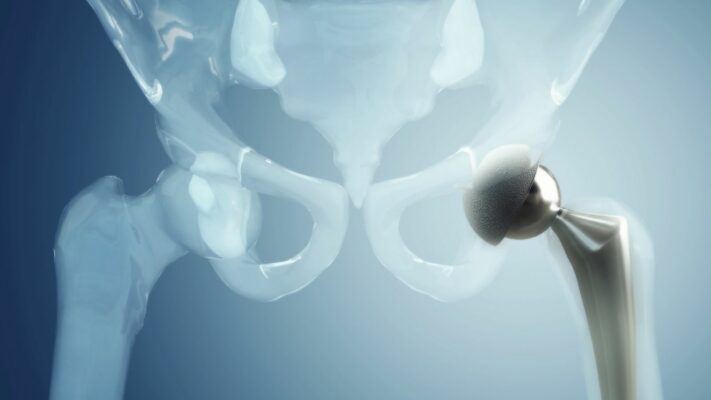Prof. Dr. Murat Demirel, one of the best orthopedic doctors performing meniscus tear surgery in Ankara, stands out with his many years of experience in diagnosing and treating this common injury that affects the stability and mobility of the knee joint. Meniscus tears are usually caused by sports injuries, sudden twisting movements, or trauma, and if left untreated, they can lead to arthritis and permanent damage in the joint. Among hospitals performing meniscus tear surgery in Ankara, Prof. Dr. Demirel provides personalized treatment plans for his patients using modern arthroscopic surgical techniques and advanced medical equipment.
By conducting a detailed evaluation before surgery, Prof. Dr. Demirel determines the most appropriate surgical method according to the type of tear and the patient’s needs, and he closely follows up with his patients after surgery. With post-operative doctor’s recommendations, the recovery process becomes fast, safe, and permanent. In addition, by providing transparent and up-to-date information about the cost of meniscus tear surgery in Ankara, he helps patients make informed decisions. You can also protect your knee health, reduce your pain, and increase your freedom of movement by contacting immediately and scheduling an appointment.
| Disease Name | Meniscus Tear |
| Affected Area | Inner (medial) or outer (lateral) meniscus of the knee joint |
| Symptoms | Pain in the knee, swelling, locking, catching sensation, restricted movement |
| Diagnostic Methods | Physical examination (McMurray test etc.), MRI imaging |
| Causes | Sudden twisting movement, sports injuries, age-related degeneration |
| Risk Factors | Aging, knee trauma, sports activities, obesity |
| Treatment Methods | Conservative (rest, ice, NSAIDs, physical therapy), arthroscopic surgery (meniscectomy or meniscus repair) |
| Surgical Options | Partial meniscectomy, meniscus repair |
| Complications | Infection, knee stiffness, recurrent tear, cartilage damage |
| Recovery Process | 4–6 weeks with conservative treatment; 6–12 weeks after surgery |
| Prevention Methods | Use of appropriate sports shoes, strengthening the muscles around the knee, warm-up exercises |
| Follow-up Process | Regular orthopedic check-ups, continuation of rehabilitation programs |


Prof. Dr. Murat Demirel
Orthopedics and Traumatology Specialist
Orthopedics Specialist Prof. Dr. Murat Demirel was born in Ankara in 1974. He completed his primary education at Ankara Kavaklıdere Primary School and his secondary and high school education at Ankara Atatürk Anatolian High School. Dr. Demirel graduated from Ankara University Faculty of Medicine in 1998 and completed his residency in Orthopedics and Traumatology at Ankara Numune Training and Research Hospital, 1st Orthopedics and Traumatology Clinic, in 2004.
PhD
Ankara University Institute of Health Sciences
Specialization
Ankara Numune Training and Research Hospital, 1st Orthopedics Clinic
Medical School
Ankara University Faculty of Medicine
Yazı İçeriği
Why is a meniscus tear so important for a healthy knee?
Let’s think of our knee as a high-performance machine for a moment. Two of the most critical parts of this machine are undoubtedly the menisci. Although often thought of as a simple piece of cartilage, the menisci are incredibly sophisticated structures that ensure the knee works perfectly. Each knee has two C-shaped menisci, one on the inside (medial) and one on the outside (lateral). They act like gaskets between our thigh bone (femur) and shin bone (tibia).
So, what is the function of these gaskets? What makes them so indispensable?
Their most basic and well-known function is shock absorption, similar to a car’s suspension system. Every time we walk, run, or jump, the weight of our body impacts our knees as a shock wave. The menisci absorb this shock wave, dissipate the energy, and protect the sensitive joint cartilage at the ends of the bones. Healthy menisci carry about 50 to 85% of this load, preventing excessive pressure from concentrating on a specific point of the cartilage. When a meniscus tear occurs, this shock absorber system fails. The load can no longer be evenly distributed and starts to directly affect the joint cartilage. Over time, this leads to wear on the cartilage, commonly known as osteoarthritis. In fact, a meniscus tear can be the beginning of the road to knee arthritis.
Additionally, the menisci are also critical for knee stability. They make the flat surface of the shin bone more compatible with the rounded lower end of the thigh bone, helping to keep the joint stable. Like wedges under a wheel, they prevent the bones from sliding abnormally over each other. This stabilizing role of the menisci becomes even more important when major stabilizers such as the anterior cruciate ligament are injured.
Finally, menisci are not just mechanical cushions. They also allow the knee to function like a sensory organ. Thanks to their special nerve endings, they continuously send information to the brain about the position and movement of the knee. This “position sense” (proprioception) helps us take more balanced and coordinated steps. That is why a meniscus tear is not just tissue damage but a very important event that affects the entire functioning, balance, and future of the knee.
How and why does a meniscus tear occur?
A meniscus tear is the disruption of the integrity of these C-shaped cartilage cushions. This disruption occurs in two main scenarios. The first is “acute tears” resulting from sudden trauma, and the second is “degenerative tears” that develop due to wear and tear over time.
Acute tears are usually seen in young and active individuals. The most typical mechanism is when the foot is fixed on the ground and the body suddenly rotates on the knee. This sudden and uncontrolled twisting movement compresses the meniscus between the two bones, causing it to tear. This may happen while trying to kick the ball in a soccer match, landing after a spike in volleyball, or while skiing. Sometimes even lifting a heavy object with a wrong movement or a direct blow to the knee can cause an acute meniscus tear.
Degenerative tears, on the other hand, have a different, more insidious story. They usually occur in individuals aged 40 and over. Over the years, meniscus tissue, just like our skin or hair, ages. It loses its water content, becomes drier and more brittle. This less elastic meniscus is no longer as durable. This worn-out meniscus can tear with even a very simple movement, even without any obvious trauma. For example, a simple twisting motion while getting in and out of the car, a slight twist of the knee when standing up from a chair, or squatting down to pick something up can trigger a degenerative tear. These patients often come to us saying, “Doctor, I didn’t do anything, I don’t know how it happened.” In fact, it is the last drop that overflows the glass; that is, the already weakened tissue tearing with a simple strain.
Contact us for detailed information and an appointment!
Who is at greater risk for a meniscus tear?
Although meniscus tears can happen to anyone, certain conditions and lifestyles can significantly increase this risk. Knowing the risk factors allows us to be more cautious against potential dangers. Some situations considered high risk are as follows:
- Advancing age
- Male gender
- Obesity (excess weight)
- History of anterior cruciate ligament (ACL) injury
- Structural leg alignment problems (bow legs or knock knees)
Certain sports and professions also carry a higher risk of meniscus tears. Activities that require sudden stops, turns, and jumps put extra strain on the menisci.
Sports considered risky include:
- Football
- Basketball
- Volleyball
- Handball
- Tennis
- Skiing
- Wrestling
Degenerative meniscus tears are also more common in individuals whose jobs require constant strain on the knees. Examples of these professions include:
- Parquet and ceramic workers
- Plumbers
- Miners
- Agricultural workers
- Porters
What symptoms would I feel if I had a meniscus tear?
The symptoms of a meniscus tear can vary greatly depending on the size, shape, and location of the tear. Sometimes a small tear presents as mild discomfort, while sometimes a large tear can completely lock your knee. However, there are some common symptoms that generally suggest a meniscus tear.
The most common symptoms of a meniscus tear are:
- Pain
- Swelling
- Catching
- Locking
- Feeling of “giving way”
- Restricted movement
- “Pop” or “click” sound
Let’s explain these symptoms in more detail. Pain is usually the first and most important sign. It is generally described as sharp, stabbing pain along the joint line on the inside or outside of the knee. This pain is aggravated by twisting the knee, squatting, or climbing stairs. Swelling may occur immediately after the injury or within a few hours. The fluid that accumulates in the knee (joint effusion) causes a feeling of tightness and stiffness.
One of the most typical symptoms is mechanical issues. These are catching and locking. Catching is the feeling that something in the knee momentarily gets stuck and then releases when moving. Locking is a more serious condition where a torn piece of the meniscus gets stuck in the joint space, causing the knee to remain in a fixed position and making it impossible to bend or straighten. This usually requires urgent intervention. The feeling of “my knee gave way” or “my knee couldn’t support me” is also common. This comes from the loss of the stabilizing function of the meniscus or a temporary protective shutdown of the muscles due to pain.
How is a meniscus tear diagnosed?
When you see an orthopedic specialist with knee complaints, a systematic evaluation process begins to reach the correct diagnosis. This process starts with a detailed conversation with you.
First, we listen to your story. When and how did your complaints begin? Do you remember the moment of injury? Where is your pain and during which movements does it increase? Do you experience feelings like locking or catching in your knee? The answers to these questions are the first and most important step in diagnosis.
Next, we perform a detailed physical examination of your knee. During this exam, we don’t just look at the painful area but at your entire knee and leg. We check for swelling, discoloration, and muscle weakness. We measure the range of motion of your knee (how much it can bend and straighten). Most importantly, we apply special tests designed to stress the menisci and provoke symptoms. Maneuvers such as the McMurray and Apley tests involve rotating and bending your knee in certain positions to check for sensitivity, pain, or a “click” sound over the meniscus. Feeling tenderness when pressing along the joint line where the menisci are located is one of the most valuable findings for a tear.
If your history and exam findings strongly suggest a meniscus tear, we use imaging methods to confirm the diagnosis and learn more details about the tear.
The main imaging methods used are:
- X-ray
- Magnetic Resonance Imaging (MRI)
X-rays do not show soft tissues such as the meniscus. However, they are often the first step to rule out other causes of knee pain (such as fractures, arthritis, or tumors) or to detect accompanying bone problems.
The gold standard for diagnosing a meniscus tear is MRI. MRI uses magnets and radio waves to create highly detailed images of all the soft tissues inside the knee, such as menisci, ligaments, and cartilage. With MRI, we not only confirm the presence of a tear but also determine its location, type (longitudinal, horizontal, bucket-handle, etc.), size, and most importantly, whether it is in a vascular area (with healing potential). This information guides us in creating the treatment plan.
Can a meniscus tear be treated without surgery?
This is one of the most common and eagerly asked questions we hear from patients. The short answer: Yes, not every meniscus tear requires surgery. Especially in certain types of tears and patient groups, non-surgical (conservative) treatment methods can be very successful.
Non-surgical treatment is usually our first choice in the following cases:
- When the tear is small and stable.
- When there are no mechanical symptoms such as locking or catching in the knee.
- Degenerative (wear-related) tears associated with aging.
- When the patient’s overall health is not suitable for surgery or the patient does not want surgery.
Non-surgical treatment is a process that combines several approaches and requires patience. Our main goals are to control pain, reduce inflammation, restore the knee’s mobility, and most importantly, strengthen the muscles around the knee to reduce the load on the meniscus.
The main methods applied in this process are:
- Activity modification and rest
- Ice application
- Compression (elastic bandage)
- Elevation (keeping the leg raised)
- Painkillers and anti-inflammatory medications
- Physical therapy and exercise programs
- Intra-articular injections (cortisone, PRP, hyaluronic acid, etc.)
The most critical and effective method among these is a personalized physical therapy and exercise program. Under the guidance of a physiotherapist, the quadriceps and hamstrings (front and back thigh muscles) are strengthened. Strong muscles act as natural support and shock absorbers for the knee joint, reducing stress on the damaged meniscus. Over time, this can result in significant pain reduction and improved function. It is important to remember that non-surgical treatment does not physically remove the tear but allows the body to adapt and the symptoms to subside.
What should people with a meniscus tear pay attention to and avoid?
If you have been diagnosed with a meniscus tear and are following a non-surgical treatment plan, there are some important points to consider in your daily life to aid recovery and prevent worsening. During this process, you need to treat your menisci with “care.”
The main movements and situations to avoid are:
- Sudden twisting and pivot movements
- Deep squatting (traditional toilet position)
- Kneeling
- Lifting and carrying heavy loads
- Impact sports such as running and jumping
- Standing for long periods or climbing stairs (if it triggers pain)
- Any activity that strains the knee and causes pain
These movements can further irritate the torn meniscus edges, enlarge the tear, or increase pain and swelling in the joint. Instead, you can choose sports that put less strain on the knee, such as swimming or cycling. Weight control is also very important. Every kilogram lost significantly reduces the load on the knees, allowing your menisci to “breathe easier.”
When does meniscus tear surgery become inevitable?
Despite trying non-surgical treatment methods, in some cases surgical intervention becomes the most appropriate and sometimes the only option. When deciding on surgery, we don’t just rely on MRI images but evaluate the patient’s complaints, expectations, and lifestyle as a whole.
The main situations that make surgical treatment inevitable are:
Locking: The presence of locking in the knee, meaning that a torn piece of the meniscus gets stuck in the joint space and completely blocks knee movement, is usually an urgent reason for surgery.
Persistent Mechanical Symptoms: Even if there is no locking, continuous recurrent catching or feelings of “giving way” that do not respond to conservative treatment generally require surgery.
Failure of Conservative Treatment: If after at least 3–6 months of a proper non-surgical treatment program, the patient’s pain does not subside and quality of daily life remains low.
Type and Location of the Tear: Especially in young and active patients, large, longitudinal, or “bucket-handle” tears located in the vascular “red zone” of the meniscus are unlikely to heal on their own and give excellent results when repaired, so they are usually treated surgically.
Associated Ligament Injuries: Meniscus tears are often accompanied by other injuries such as anterior cruciate ligament (ACL) tears. In this case, to restore knee stability, both problems usually need to be addressed in the same surgical session.
Today, meniscus surgeries are performed almost entirely by “arthroscopic” methods, meaning closed surgery. Instead of making a large incision in your knee, the entire procedure is done through just a few small holes (about 0.5 cm) using a camera and special instruments. This minimally invasive approach results in less pain, faster recovery, and better cosmetic outcomes.
In meniscus tear treatment, is repair or removal better?
In arthroscopic meniscus surgery, we basically have two options: repairing the torn part by stitching it (meniscus repair) or removing the irreparable damaged section (partial meniscectomy). The answer to the question “Which is better?” is not a one-size-fits-all solution. This decision depends entirely on the features of the tear and the patient’s condition. The fundamental philosophy in modern orthopedics is to preserve and repair the meniscus tissue whenever possible. Because we know very well how valuable the meniscus is and what long-term problems its loss can cause.
Let’s put the factors that influence our decision on the scale:
Meniscus Repair (Stitching) Side:
- Younger patient (generally under 40–50 years old)
- Active lifestyle, athlete
- Tear is recent (acute)
- Tear is located in the vascular outer region of the meniscus (“red zone”)
- Tear shape is suitable for stitching (longitudinal, bucket-handle, etc.)
- Absence of severe arthritis in the knee
Partial Meniscectomy (Removal) Side:
- Older age
- More sedentary lifestyle
- Tear is old (chronic) and degenerative
- Tear is located in the non-vascular inner region of the meniscus (“white zone”)
- Tear shape is complex, fragmented, and not suitable for stitching
- Presence of advanced arthritis in the knee
Meniscus repair is the most ideal option in the long term because it preserves the knee’s original anatomy and function. However, the recovery process is longer and more demanding. The patient must comply with a long rehabilitation period after surgery (using crutches, wearing a special brace, carefully doing exercises). Meniscectomy, on the other hand, eliminates symptoms much faster and has a shorter recovery period. But since a portion of the meniscus tissue is sacrificed, it can slightly disrupt load distribution in the knee over the long term and increase the risk of arthritis.
Frequently Asked Questions
What is the meniscus and what does it do in the knee?
The meniscus is a crescent-shaped, flexible, cartilage-like structure located between the thigh bone (femur) and the shin bone (tibia) in the knee joint. It acts as a shock absorber, distributes the load evenly across the joint, and provides stability. It also prevents the bones from rubbing against each other during knee movements.
How does a meniscus tear occur?
A meniscus tear usually occurs when the knee suddenly twists, bends, bears weight, or during an unexpected movement while playing sports. It is especially common in sports like football and basketball. Since the meniscus tissue weakens with age, tears can also occur from simple movements in older adults.
What are the symptoms of a meniscus tear?
Pain in the knee, swelling, limited range of motion, difficulty climbing stairs, a sensation of catching or locking in the knee, and sometimes sounds coming from the knee are the main symptoms of a meniscus tear.
How is a meniscus tear diagnosed?
Diagnosis is based on the doctor’s examination and the patient’s medical history. Knee sensitivity, pain during movement, and specific tests can raise suspicion of a tear. For a definitive diagnosis, MRI (magnetic resonance imaging) is usually used.
Can a meniscus tear heal on its own?
Small and stable meniscus tears may sometimes heal with rest, ice application, pain relievers, and physical therapy. However, large tears, tears causing catching during movement, or detached meniscus fragments usually do not heal on their own and require surgical treatment.
When is meniscus surgery necessary?
If there is locking, catching, persistent pain, and swelling in the knee, the size and location of the tear may require surgical treatment. Meniscus surgeries are generally performed arthroscopically, where either repair or removal of the torn section is carried out.
What is the recovery process after meniscus surgery?
After surgery, patients are usually able to stand up on the same day or the next day. Physical therapy and exercises are performed to strengthen muscles and improve knee mobility. Recovery takes 4–8 weeks, depending on the procedure performed.
Can people with a meniscus tear play sports?
Most patients can return to daily activities and sports after proper treatment and rehabilitation. However, sports should not be resumed until the knee has fully healed and the doctor has given permission.
Does a meniscus tear recur?
The risk of recurrence decreases if proper treatment and strengthening exercises are done. However, in people who play intense sports, perform sudden movements, or have had previous meniscus surgery, new tears may occur.
What problems can arise if a meniscus tear progresses?
Untreated meniscus tears increase the risk of knee osteoarthritis, cause permanent joint damage, limited mobility, and persistent pain. Therefore, early diagnosis and treatment are very important.




